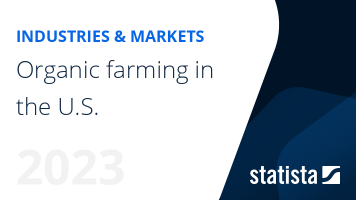Organic food consumption in Finland - statistics & facts
Looking at different product categories, eggs had the highest organic market share of over 15 percent in 2016. Organic milk as well as organic fruit and vegetables accounted for roughly four percent of each respective market. The popularity of organic food is characterized by more general market trends related to well-being, natural ingredients and responsibility. New categories and products are introduced to respond to the needs of the conscious consumer.
Based on the results of a 2015 survey on organic food consumption, Finnish organic food consumers can be divided into four categories: active consumers (27 percent), regular consumers (22 percent), occasional consumers (37 percent) and nonconsumers (14 percent). According to a 2017 survey on the same topic, the share of individuals consuming organic food regularly increased by five percent compared to 2015. The most regular organic food eaters were women aged 15 to 49, as well as men aged 35 to 49. Individuals living in the metropolitan area and Western Finland consumed organic produce more regularly than their counterparts in Southern, Northern and Eastern Finland. Households with children chose organic products more often than individuals living alone. The income level also had an impact on organic food consumption, as individuals with an annual income of over 60,000 euros ate organic food more often than individuals with lower salary levels.
From 2015 to 2017, the demand for clean food and local produce increased notably. Approximately 85 percent of Finnish grocery shoppers preferred or considered purchasing organic food, mainly motivated by cleaner, healthier and better-quality nutrition. The most regularly consumed organic products among Finns were fruits and berries, vegetables as well as cereal products. The highest share of individuals not intending to add organic food products to their shopping basket were men aged 50 to 64. According to the survey, the likelihood for an individual not to buy organic decreased as the income level increased. In fact, price differences compared to other food and the unavailability of information were the issues most associated with organic food.














































